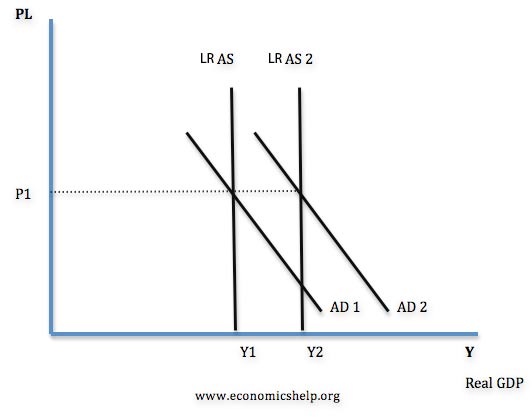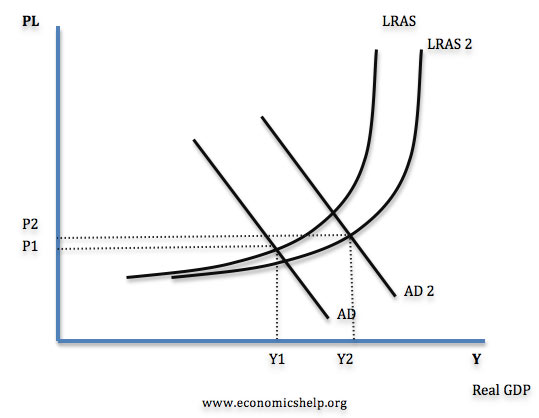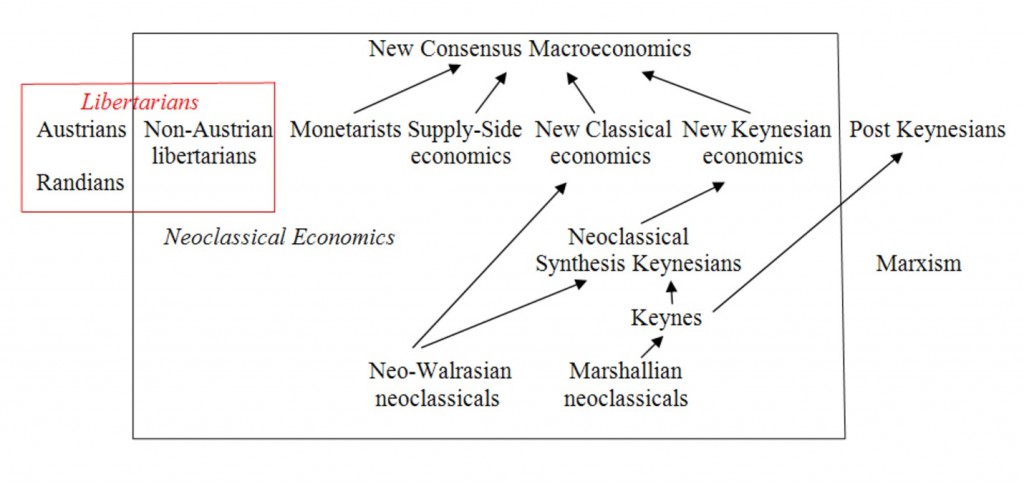Supply Side economics is the branch of economics that considers how to improve the productive capacity (aggregate supply) of the economy as opposed to New and Post Keynesians that often concentrate on the aggregate demand side.
“It is a school of macroeconomic thought that argues that economic growth can be most effectively created by lowering barriers for people to produce (supply) goods and services, such as lowering income tax and capital gains tax rates, and by allowing greater flexibility by reducing regulation.” (source)
Supply-side economics is a new neoclassical orthodoxy that emerged in the 1980s can be called “neoliberalism, which had been already applied in the 1960s in Germany. It is related to the reforms for struggling countries, in the “Washington consensus,” a receipt to do “globalization”. George W. Bush took advice from the rather neoliberal or economically conservative Republican N. Gregory Mankiw, who was chairman of Bush’s Council of Economic Advisors from 2003 to 2005.
Reaganomics and Thatcherism were blends of the various new neoclassical ideas. In particular, Reaganomics was a blend of monetarism and supply-side economics, with a type of military Keynesianism brought in via Reagan’s huge budget deficits. Thatcherism was a more doctrinaire neoliberal ideology influenced by Milton Friedman, with a tinge of Austrian rhetoric, via Friedrich von Hayek.
Supply Side Policies are government attempts to increase productivity and shift Aggregate Supply (AS) to the right.
Benefits of Supply Side Policies
(Major source of the following Economics Help, but with certain corrections)
1. Lower Inflation.
Shifting AS to the right will cause a lower price level. By making the economy more efficient supply side policies will help reduce cost push inflation.
2. Lower Unemployment
Supply side policies can help reduce structural, frictional and real wage unemployment and therefore help reduce the natural rate of unemployment.
See: Supply side policies for reducing unemployment
3. Improved economic growth
Supply side policies will increase the sustainable rate of economic growth by increasing AS.
4. Improved trade and Balance of Payments.
By making firms more productive and competitive they will be able to export more. This is important in light of the increased competition from S.E. Asia.
see also: Economic Importance of Supply Side Policies
Diagram Showing effect of Supply Side Policies

Classical view of LRAS shifting to the right.

Keynesian view of LRAS shifting to the right.
Supply Side Policies
Most supply side policies aim to enable the free market to work more efficiently by reducing govt interference.
1. Privatisation.
This involves selling state owned assets to the private sector. It is argued that the private sector is more efficient in running business because they have a profit motive to reduce costs and develop better services.
See more on Privatisation
2. Deregulation
This involves reducing barriers to entry in order to make the market more competitive. For example BT used to be a Monopoly but now telecommunications is quite competitive. Competition tends to lead to lower prices and better quality of goods / service.
3. Reducing Income Taxes.
It is argued that lower taxes (income and corporation) increase the incentives for people to work harder, leading to more output.
However this is not necessarily true, lower taxes do not always increase work incentives (e.g. if income effect outweighs substitution effect)
4. Increased education and training
Better education can improve labour productivity and increase AS.
Often there is under-provision of education in a free market, leading to market failure. Therefore the govt may need to subsidise suitable education and training schemes.
However govt intervention will cost money, requiring higher taxes, It will take time to have effect and govt may subsidise the wrong types of training
5. Reducing the power of Trade Unions
This should
a) increase efficiency of firms e.g. less time lost to strikes
b) reduce unemployment ( if labour markets are competitive)
6. Reducing State Welfare Benefits
This
may encourage unemployed to take jobs.
7. Providing better information about jobs
This may also help reduce frictional unemployment
8. Deregulate financial markets to allow more competition and lower
borrowing costs for consumers and firms.
9. Lower Tariff barriers this will increase trade
10. Removing unnecessary red tape and bureaucracy which add to a firms costs
11. Improving Transport and infrastructure.
Due to market failure this is likely to need govt intervention to improve transport and reduce congestion. This will help reduce firms costs.
12 Deregulate Labour Markets
This is said to be an important objective for the EU to increase competitiveness. E.g. Make it easier to hire and fire workers.
See more for




















